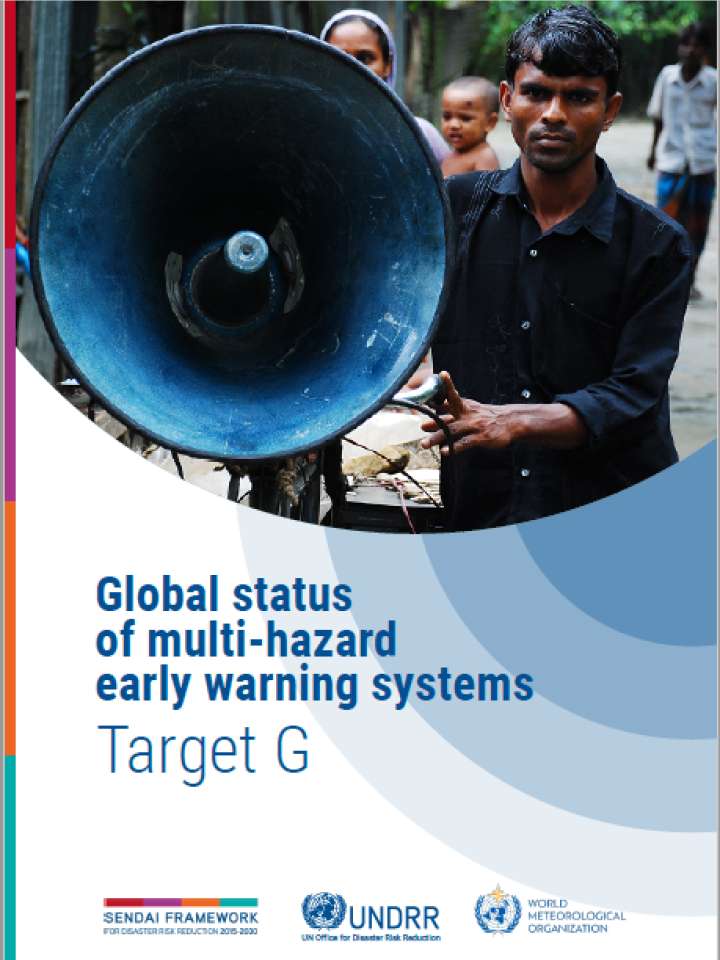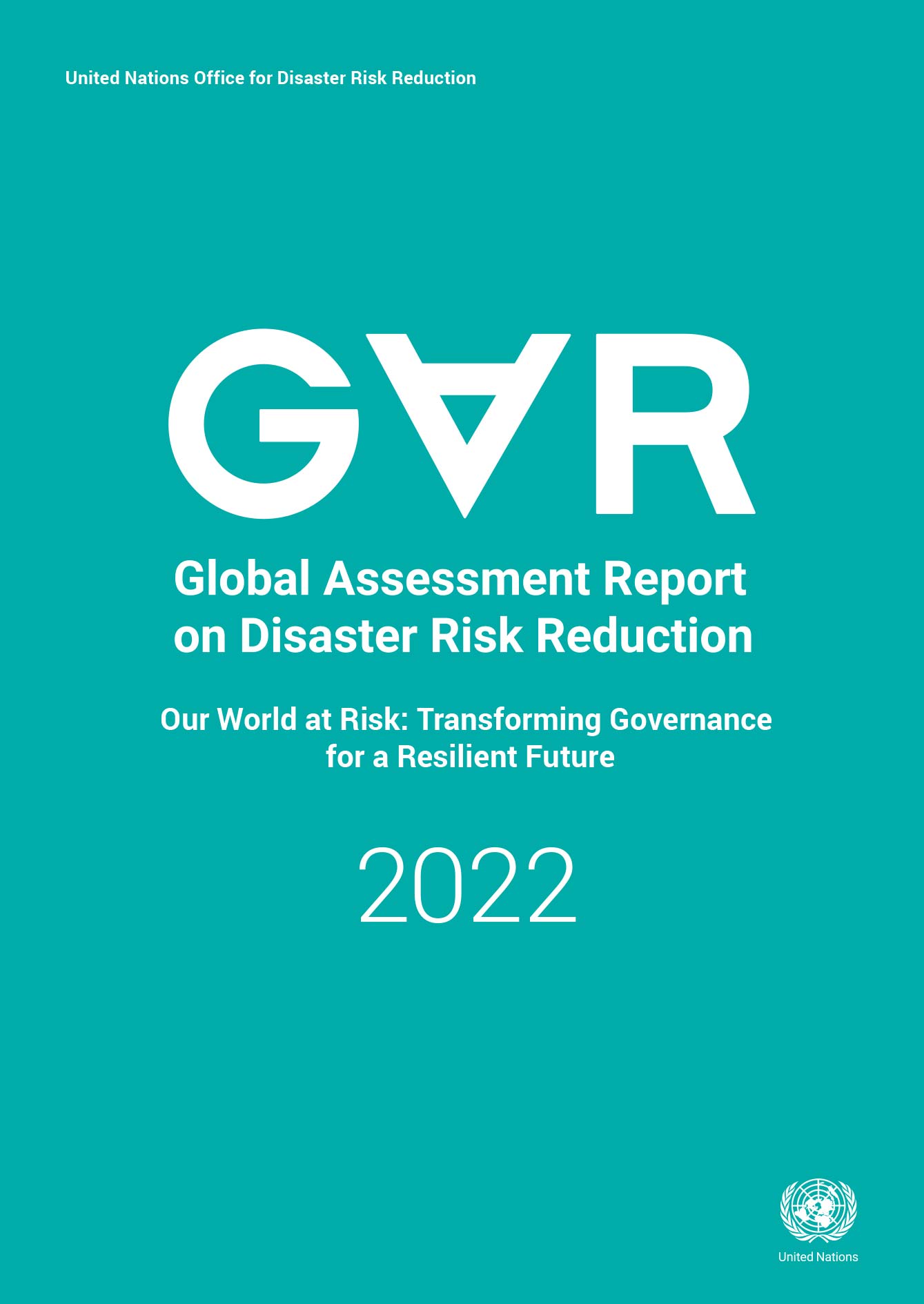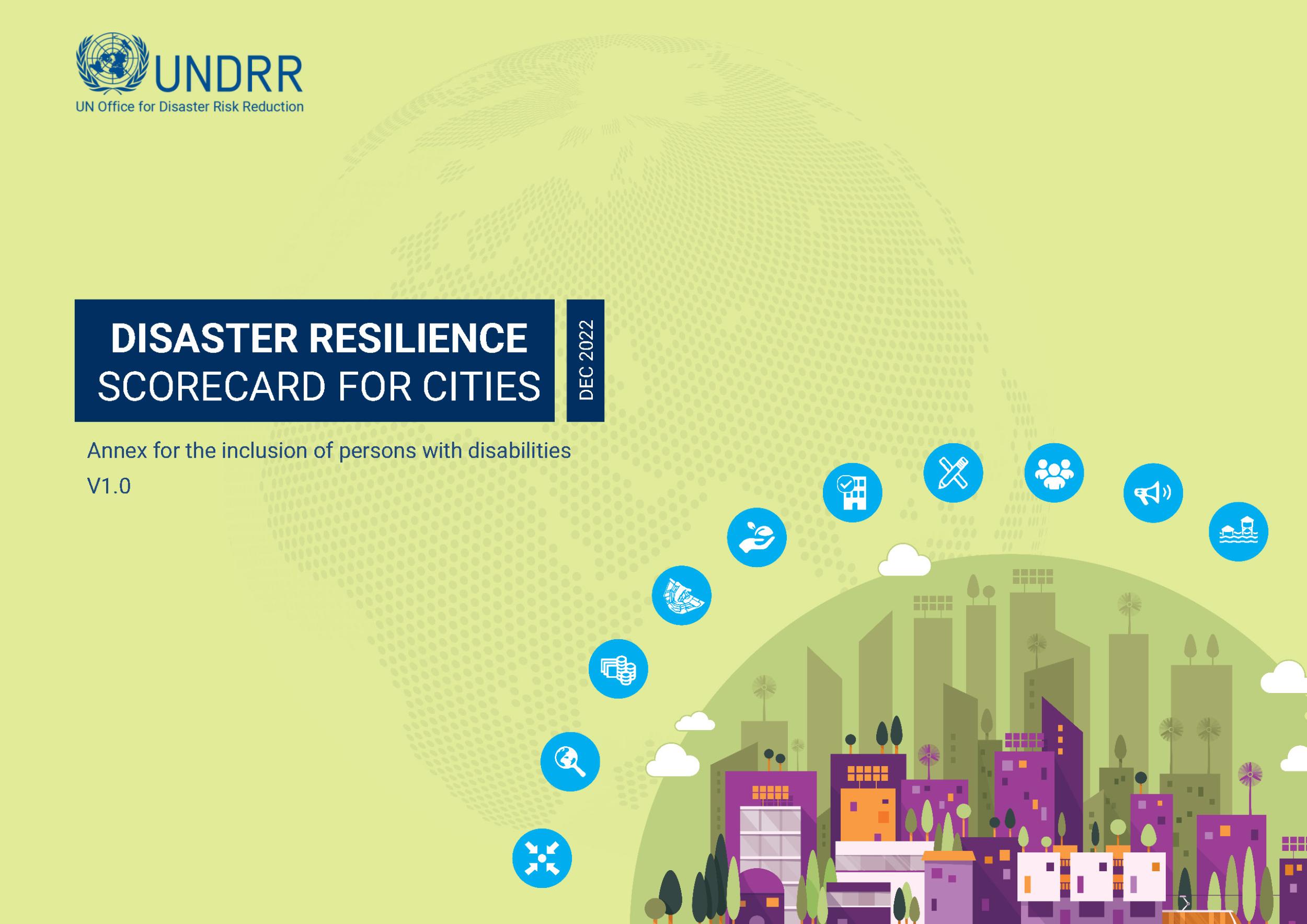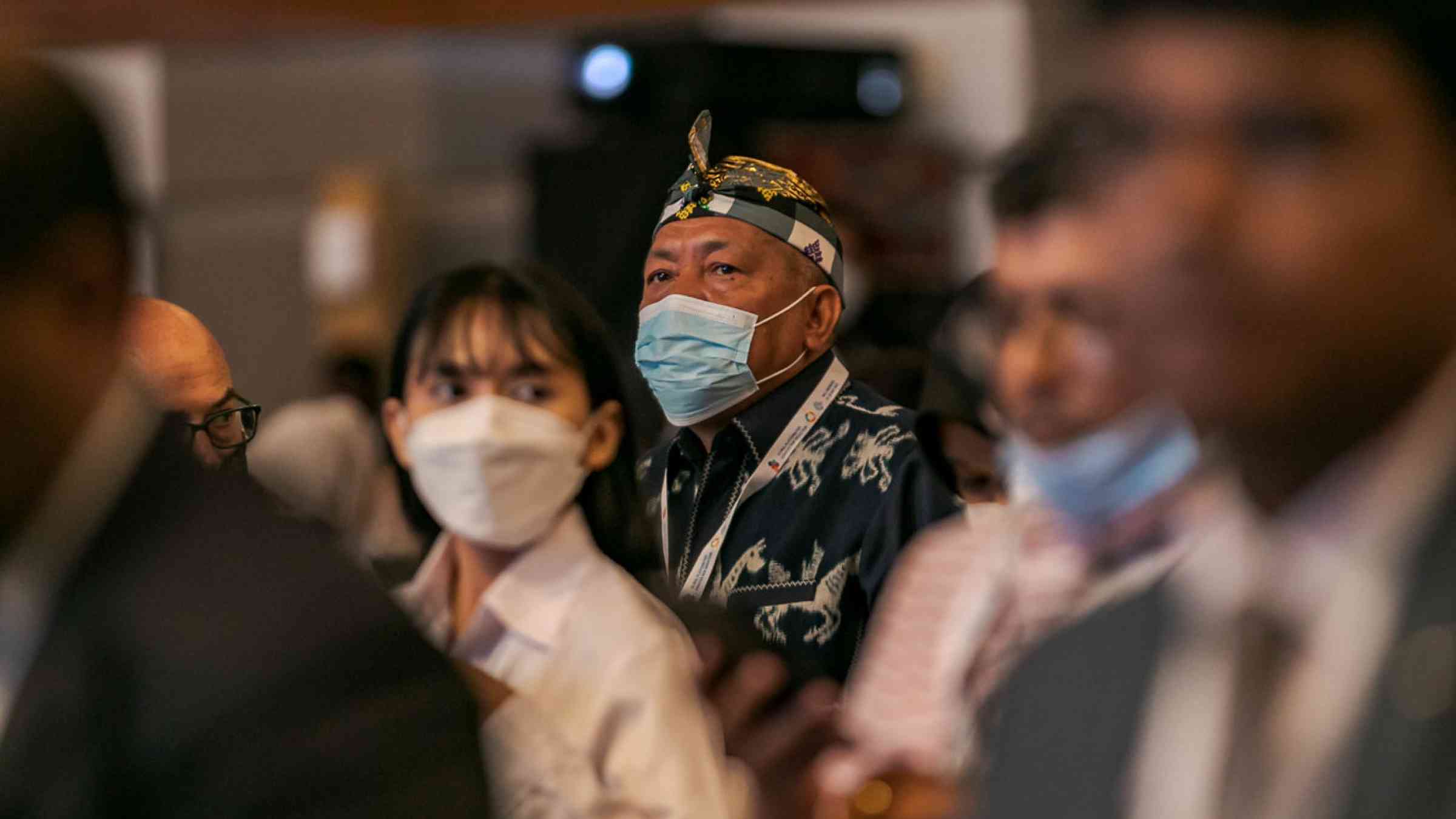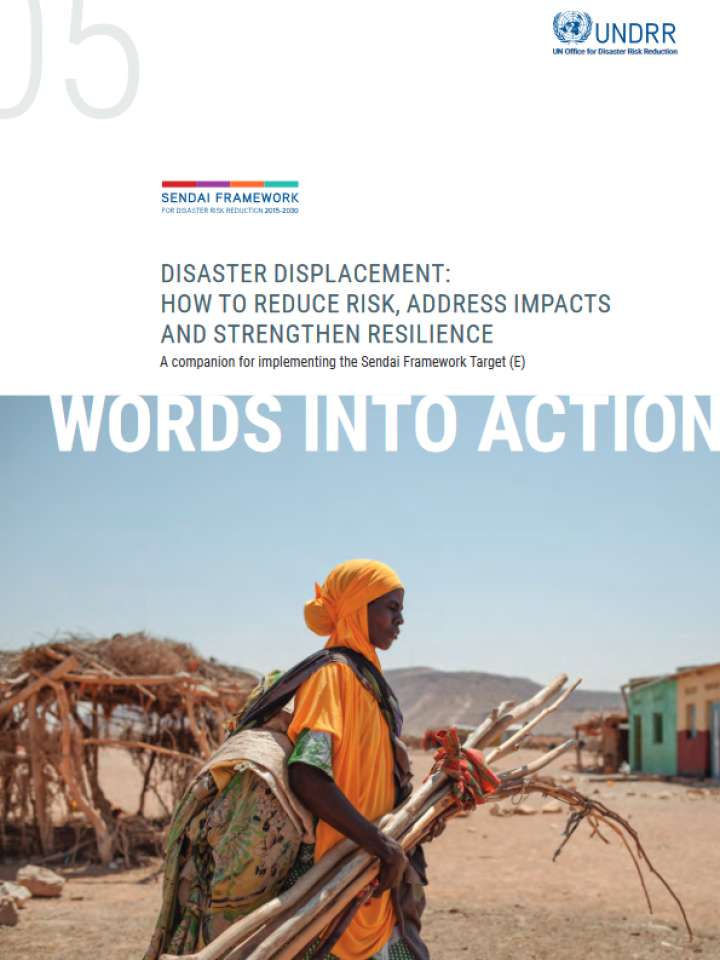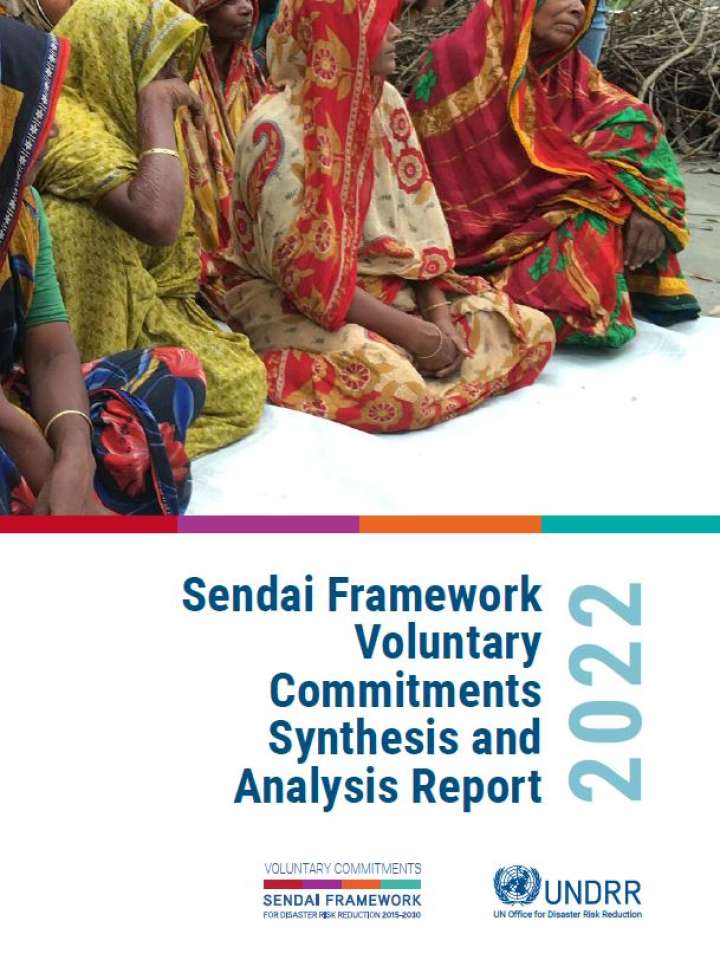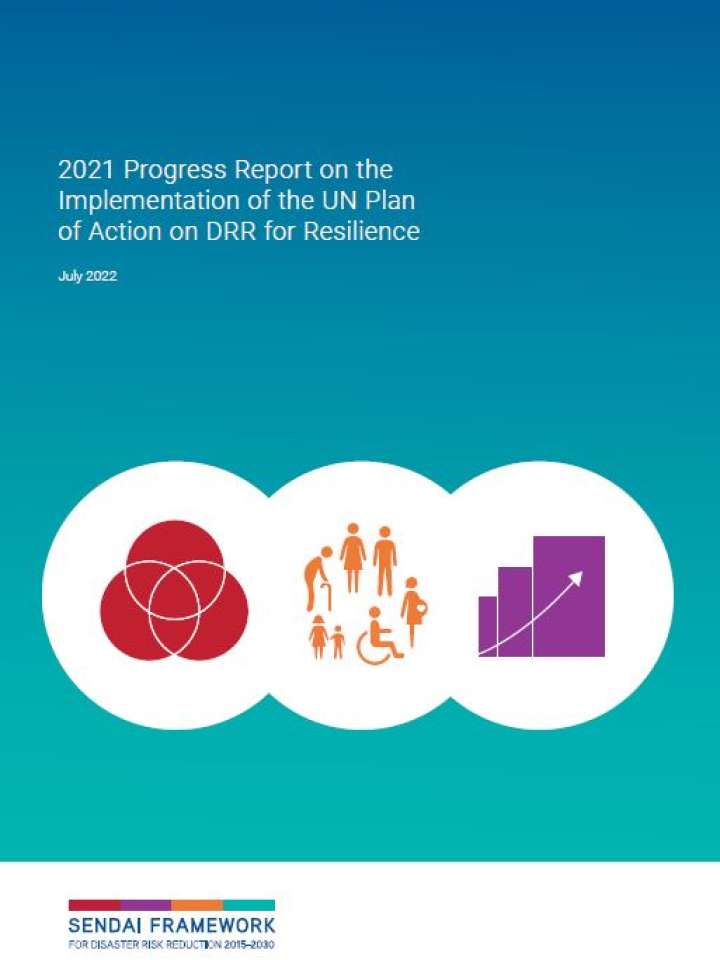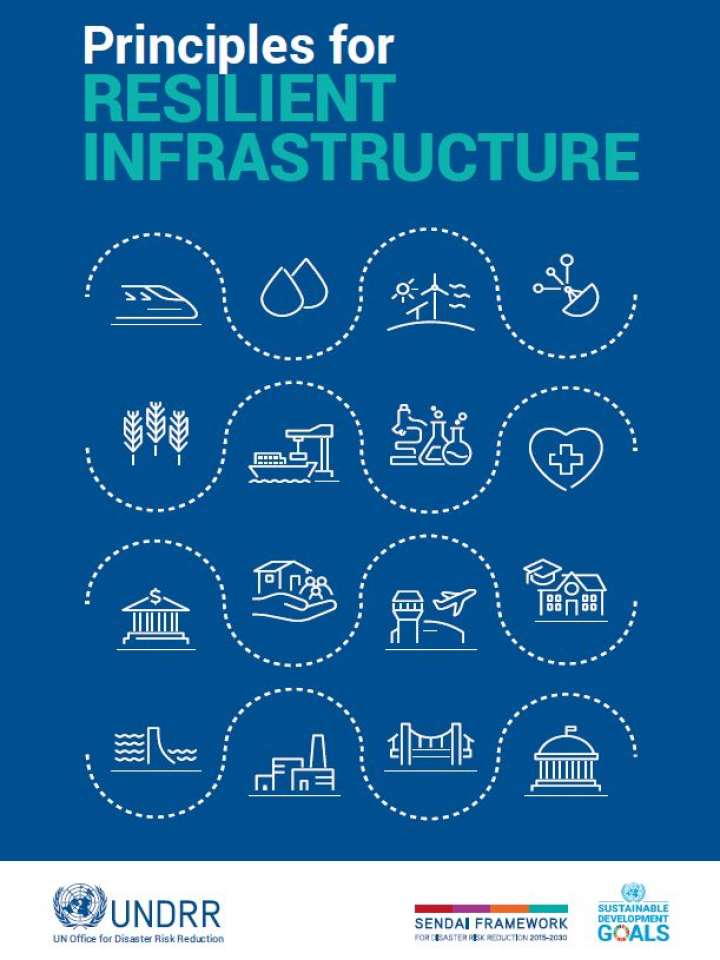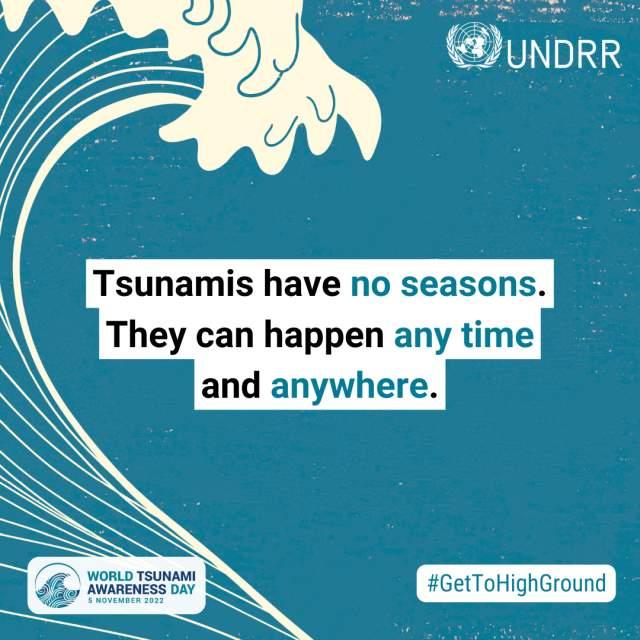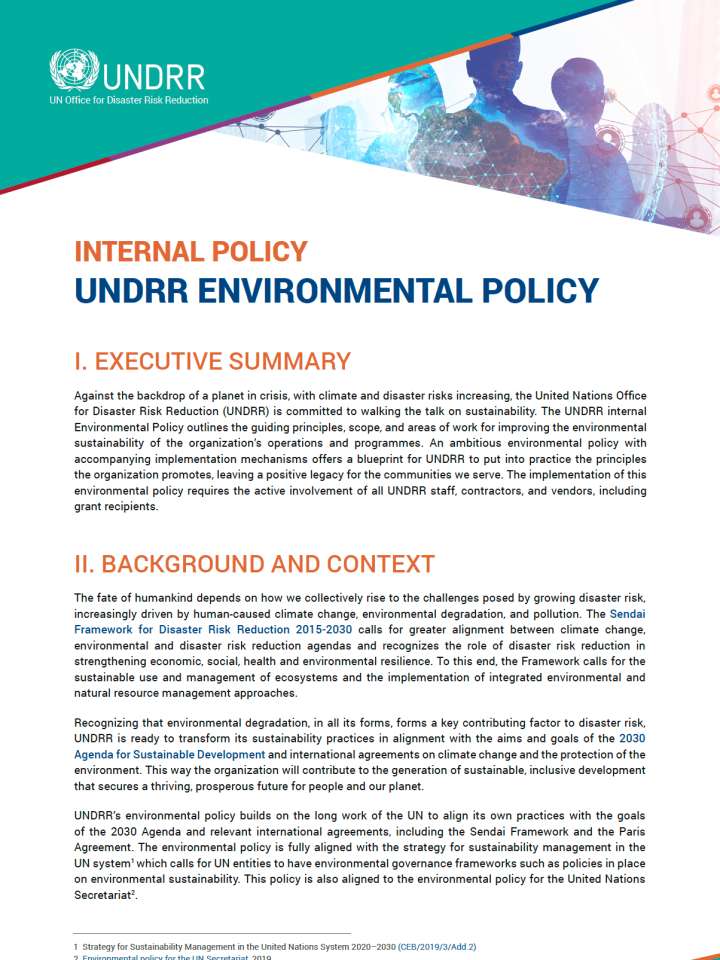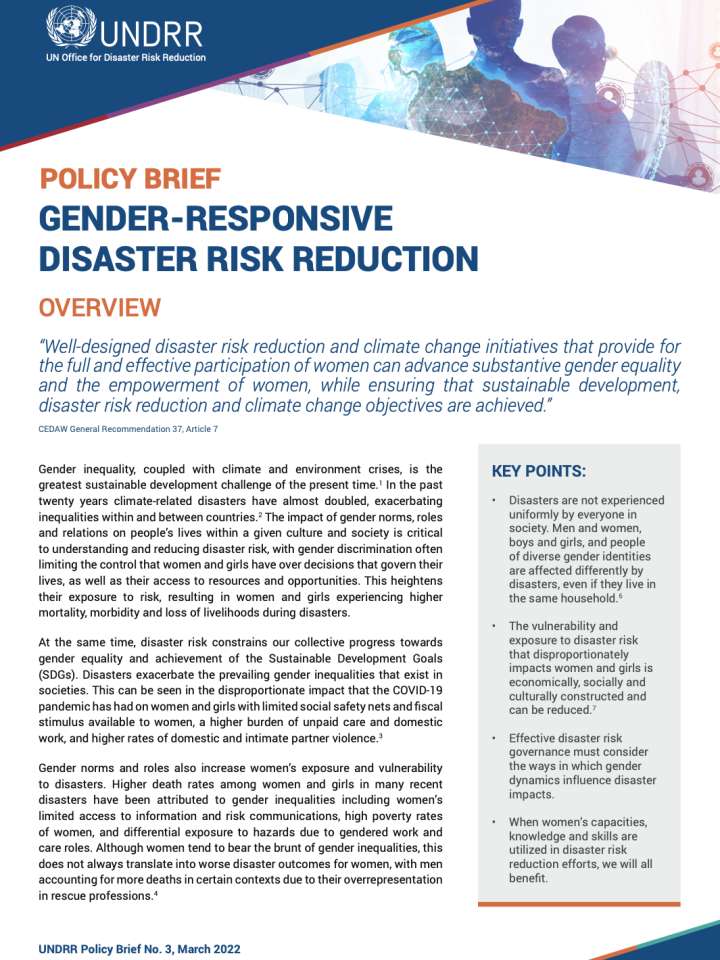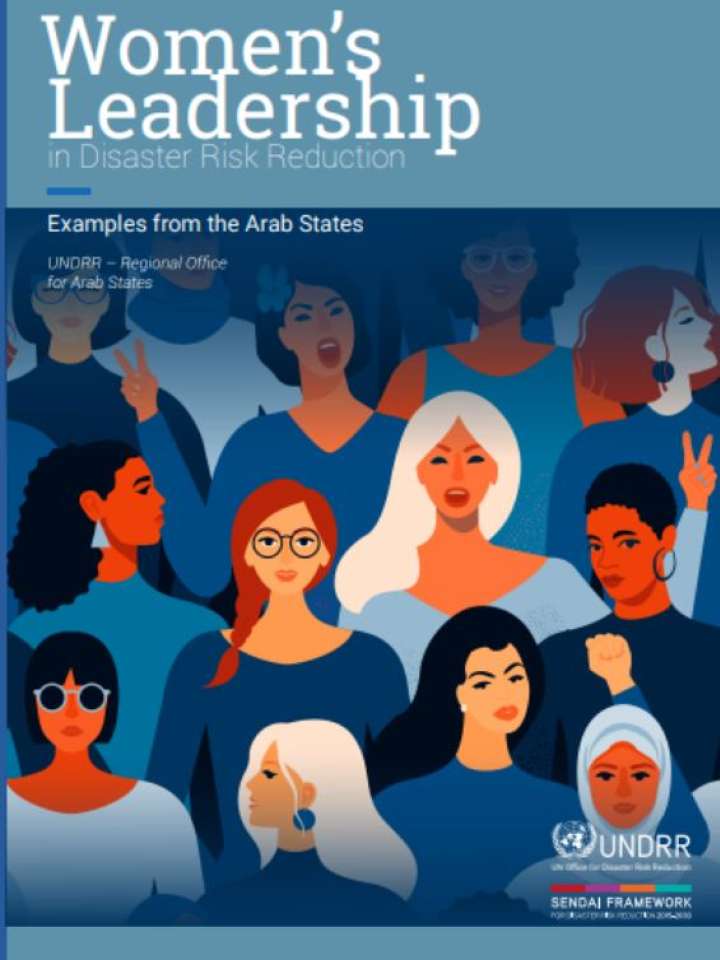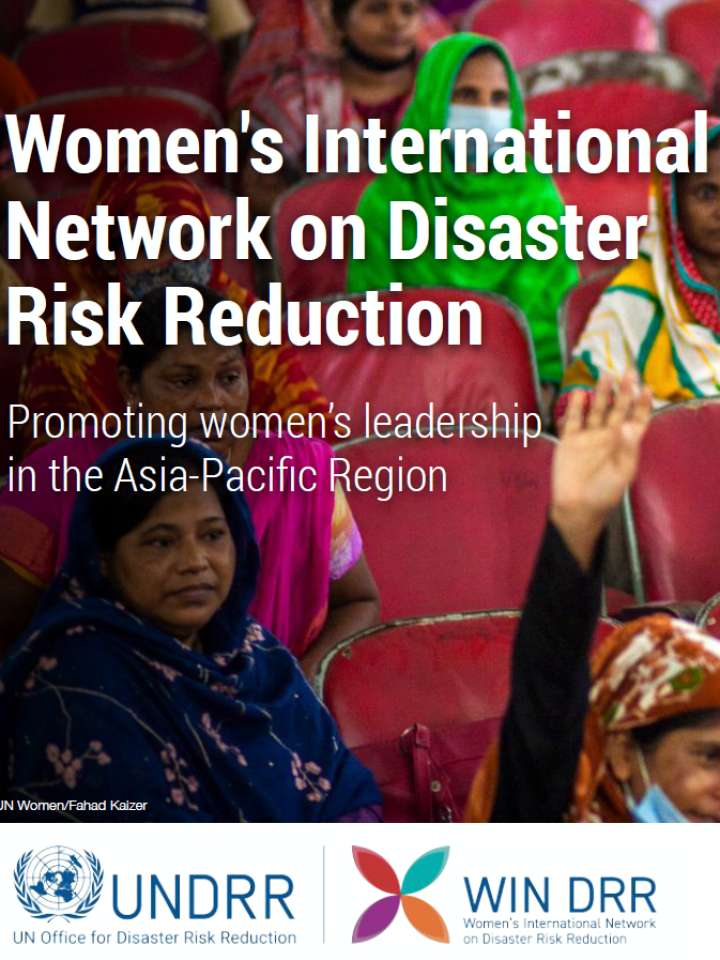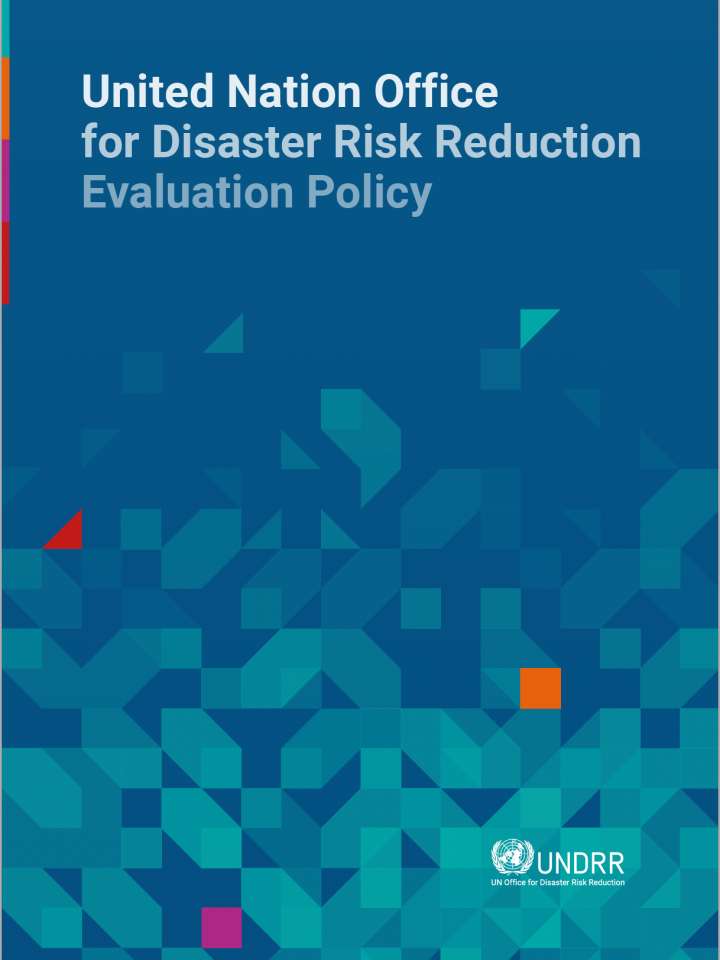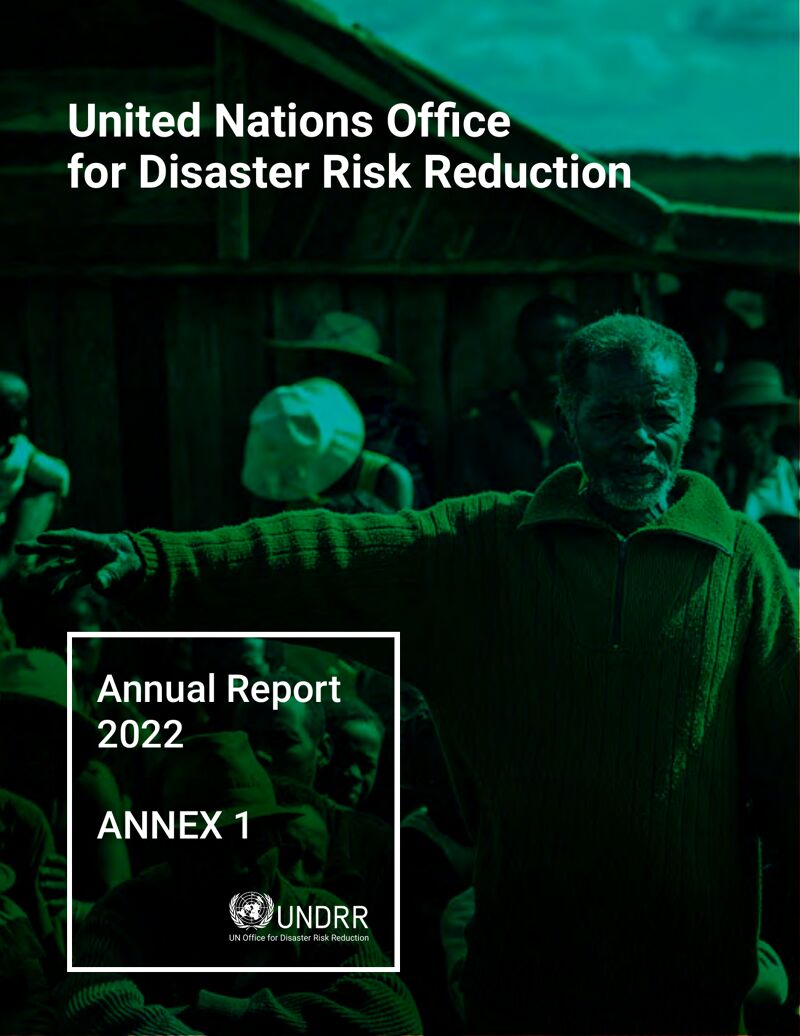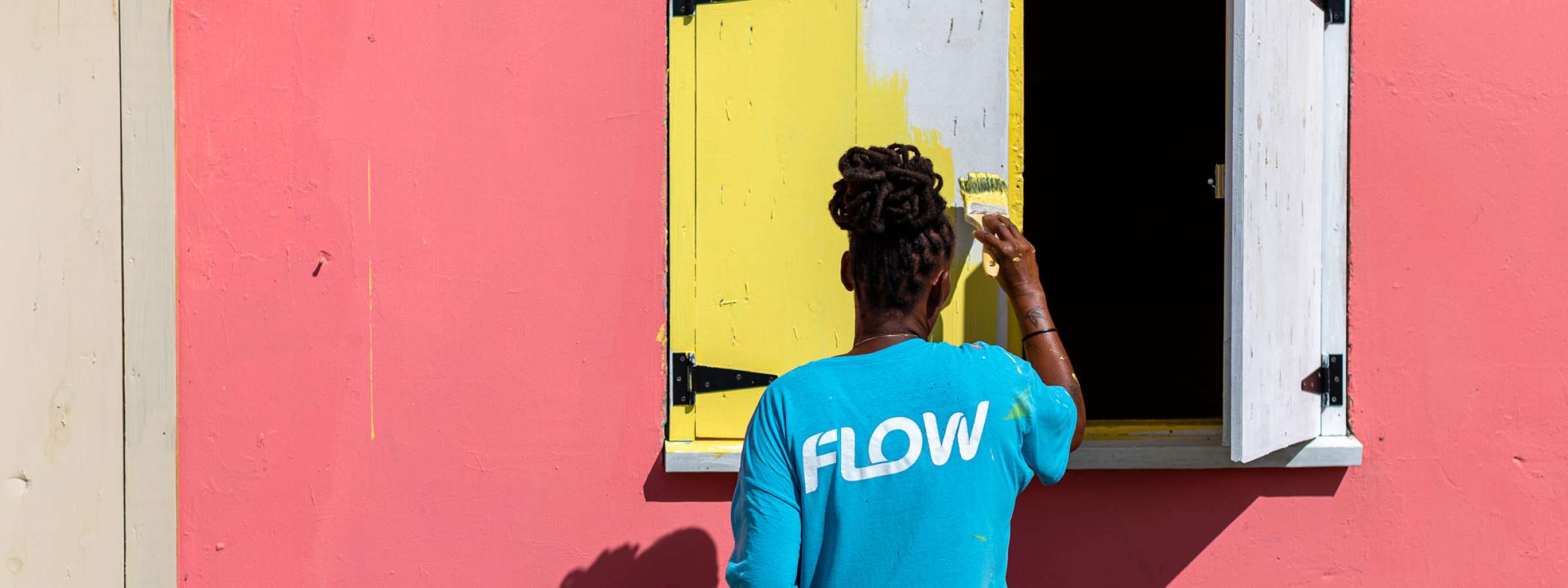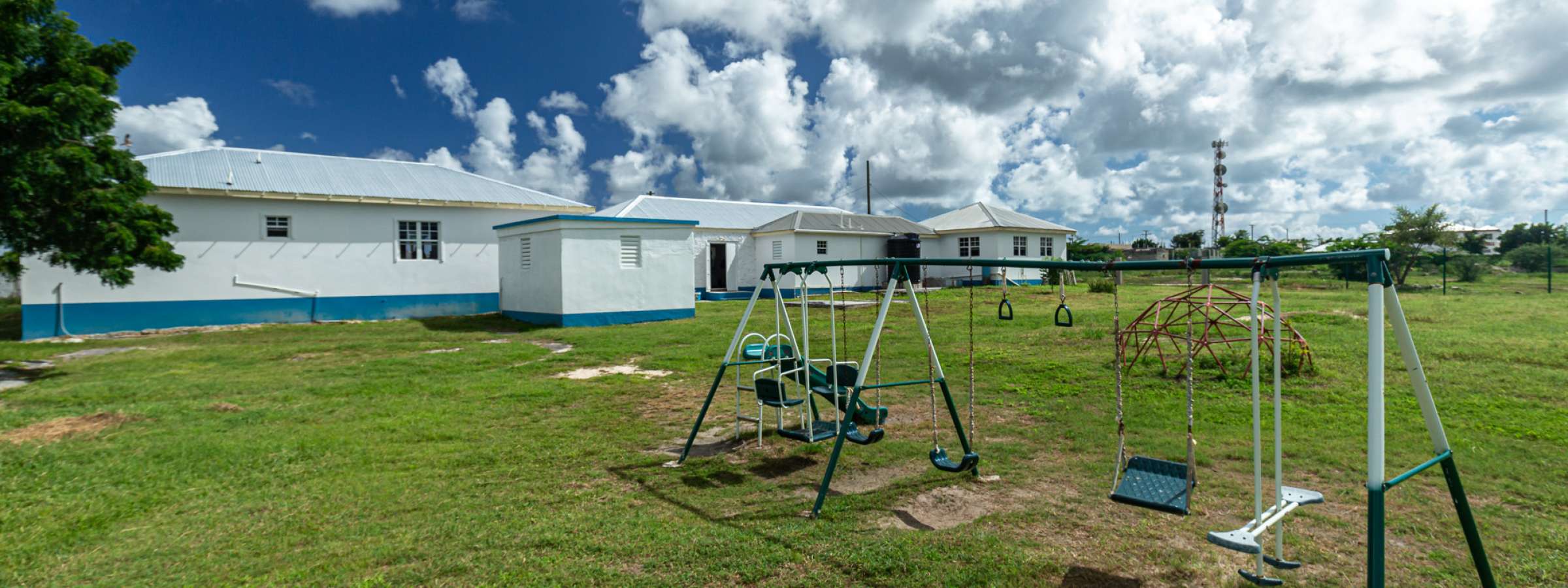UNDRR 2022 Annual report
United Nations Office for Disaster Risk Reduction
Annual Report 2022
The year 2022 was marked by several important achievements for UNDRR
- Foreword
- 2022 In numbers
- Risk information and evidence-based policies
- Strengthening governance, strategies and capacity at all levels
- Catalysing investments and actions through partnerships and stakeholder engagement
- Knowledge sharing and advocacy to support implementation
- An effective global leader for DRR
- Donor overview
- Annex I - Progress Against Output Indicators (PDF)
Or, keep scrolling to read online highlights
Foreword
In 2022, we launched the new Global Assessment Report and convened, with the support of Indonesia, the first post- COVID-19 Global Platform, which brought together leaders and practitioners from across the world and led to the development of the Bali Agenda for Resilience. The Global Platform made clear the substantive work being done by countries to better understand disaster risk, integrate it into policy and planning, and enable the finance and investment flows for implementation. On our side, we have strengthened our end- to-end support offer to countries to meet this growing demand.
We also lent our support to countries and stakeholders to organize consultations and conduct national reviews as part of the year-long stocktaking for the Midterm Review of the implementation of the Sendai Framework for Disaster Risk Reduction.
And we are proud to have worked with partners to influence multilateral policy agendas to better recognize and integrate disaster risk reduction, as we saw from the outcomes of the COP27, where addressing disaster losses gained prominence and action was taken to operationalize the Santiago Network for technical support to developing countries.
It is clear that DRR has gained political traction in global dialogues with the establishment of a G20 Working Group on DRR, and the clear messaging coming through in a statement from the G7 on strengthening DRR in humanitarian action.
Most of all, we were honoured to have been asked by the UN Secretary-General to co- lead with WMO, the implementation of his global Early Warnings for All Initiative, which seeks to ensure universal early warning coverage by the year 2027.
Nevertheless, 2022 was also a year that saw human and economic costs of disasters reach new heights, crystallizing the concern that we are nearing a point where the magnitude of disasters simply overwhelms adaptation and response capabilities.
The devastation inflicted on Pakistan stands as a warning to all countries of the danger of ignoring climate and disaster risks. If global inaction continues, we estimate that the world could face 1.5 major disasters every day by the year 2023.
This would not only spell doom for the Sustainable Development Goals, but it would drive up humanitarian needs to unprecedented levels and it would be a sad admission that the goal of the Sendai Framework has not been achieved. However, there is hope for a turnaround and we seek to leverage every opportunity in 2023 to make that happen.
Key among these opportunities will be the conclusion of the Midterm Review of the Sendai Framework, which will culminate in a high-level meeting of the UN General Assembly in New York with a political declaration on the way forward.
Acting on the findings and recommendations of the Midterm Review, and integrating them into global processes, such as the 2023 SDG Summit, COP28 and the G7 and G20 negotiations, could be our last hope for reversing the trend of disasters and creating a world of zero climate disasters.
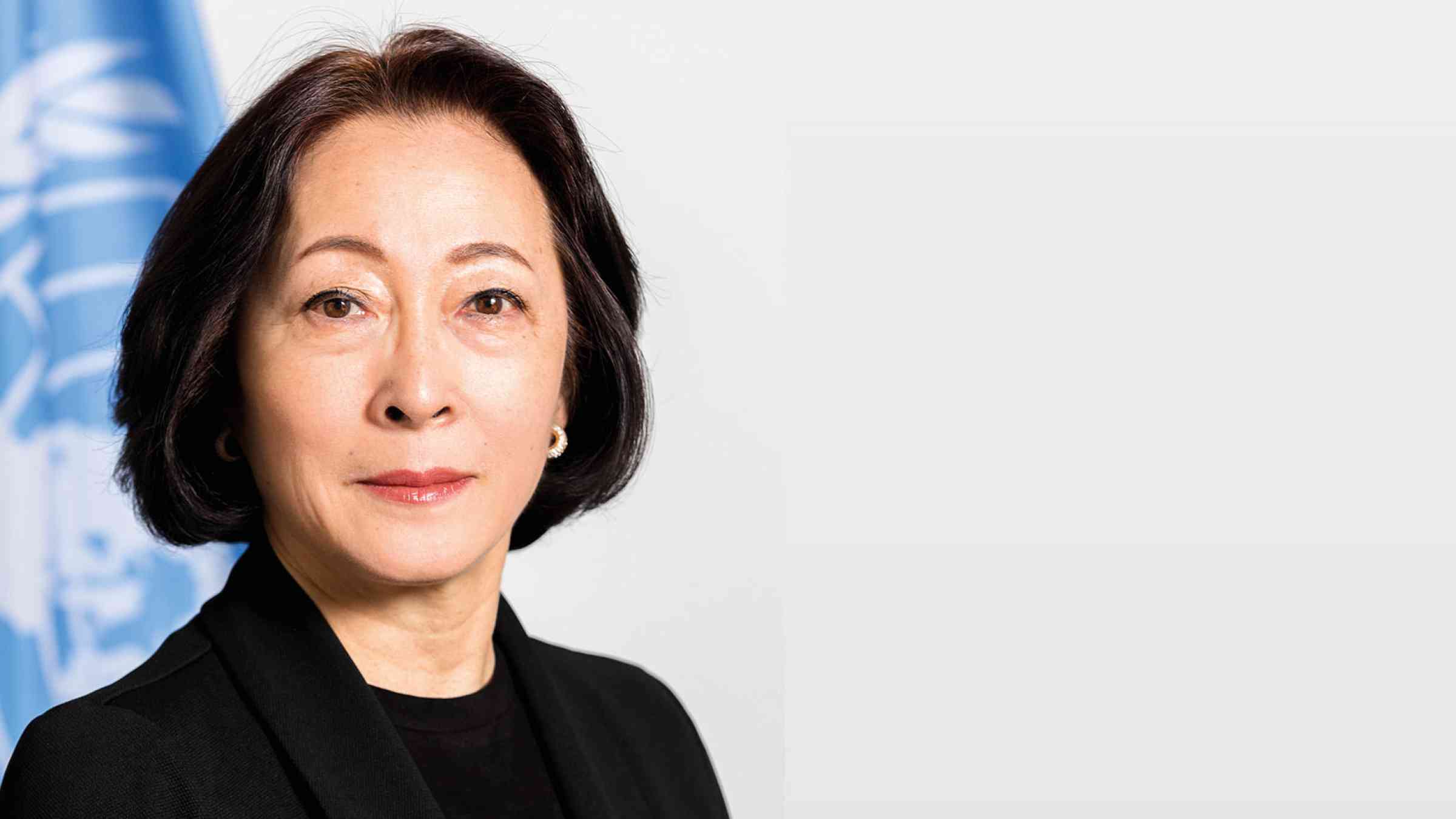
Mami Mizutori
Special Representative of the Secretary-General for Disaster Risk Reduction
2022 In numbers
Million USD in income
people from 190 countries received capacity building training through UNDRR’s Global Education and Training Institution
Member States reporting to have national DRR strategies
countries benefitted from UNDRR risk related technical support
Countries reporting in the Sendai Framework Monitoring
Midterm Review of the Implementation of the Sendai Framework
MTR Member States: inclusive government-led, multi-stakeholder national consultations and reviews
organizations, funds and programmes of the UN System
constituencies of the UNDRR Stakeholder Engagement Mechanism
2022
Global Platform
participants, online and in person
female participation
persons with disabilities
Risk information and evidence-based policies
In a world confronted with an ever-more complex and uncertain risk landscape, one where climate change and systemic risks threaten our social, economic and financial systems, effective Disaster Risk Reduction (DRR) depends on a better understanding of the interconnected nature of hazards, exposure and vulnerability. This is key to achieving the Sustainable Development Goals (SDGs). Effective DRR entails risk-informed decision-making and investment in resilience, which in turn require comprehensive climate and disaster risk information, innovation, and stronger links between science and policy.
Through a wide range of initiatives and partnerships, UNDRR facilitated the gathering, sharing and analysis of detailed and verified risk information to empower decision-makers across government sectors to formulate and finance evidence-based DRR policies and programmes. At the same time, UNDRR supported governments and, in line with its all-of-society approach, other stakeholders1 to integrate climate change and DRR into broader strategies and policies across and within sectors. These achievements were accelerated, and accountability towards the Sendai Framework was strengthened, through systematic reviews and monitoring.
- 156 Countries are using the Sendai Framework Monitor
- 75 Countries received UNDRR risk related technical support
- 185 Countries attended the seventh edition of the Global Platform for Disaster Risk Reduction (GP2022)
- 50+ Countries Asia Pacific Ministerial Conference on Disaster Risk Reduction (APMCDRR)
Strengthening governance, strategies and capacity at all levels
Through its regional offices, UNDRR supported Member States and other stakeholders to strengthen disaster risk governance. These efforts fostered cohesive participatory action to reduce risk and tackle the climate emergency at the national, regional and global levels through clear vision, plans, capacity building, guidance and coordination within and across sectors.
UNDRR complemented Member States’ efforts to implement the Sendai Framework through its continued support for an all-of-society multi-stakeholder approach. More specifically, UNDRR worked with Member States to develop and implement their DRR strategies and DRR-related aspects of the UN Sustainable Development Cooperation Frameworks and Common Country Analyses. It also supported the exchange of good practices and programmes for cooperation and capacity development to address common and transboundary disaster risks, including South–South cooperation.
- UNDRR-led trainings are scaling up capacity development for enhancing DRR informed plans and policies at both local and national levels
- Direct link between UNDRR’s training and delivery against Sendai Framework Target E and Sustainable Development Goals (SDGs) 1, 11 and 13
- Strengthening DRR at the regional, national, and local levels of governance in southeast Asia
David Bablee, Chief Executive, Municipal Council of Beau Bassin Rose Hill, Mauritius
Catalysing investments and actions through partnerships and stakeholder engagement
In 2022, UNDRR continued to catalyse DRR investment and action through partnerships and engagement with stakeholders in line with the Sendai Framework’s emphasis on an all-of-society approach to DRR. In practice, this means that governments, the private sector, parliamentarians, civil society, international finance institutions, the international academic and science arena, media, youth groups and other key stakeholders should all engage in DRR.
UNDRR encourages such engagement to address infrastructure resilience, accelerate DRR financing, de- risk investments, build coherence with the 2030 Agenda and scale up DRR in fragile contexts with particular focus on the most at risk, to leave no one behind. It continues to strengthen strategic, impact-driven partnerships, including within the UN system, by stepping up technical collaboration to improve how DRR is enhanced in UN processes at the global level and mainstreamed into intergovernmental policy decisions. Significant progress has been made in UNDRR’s goal in this area; to deepen coherence between the implementation of the Sendai Framework and other intergovernmental global agreements related to sustainable development and climate action.
- A new programme of action for LDCs provides an unprecedented opportunity
- Governments committed to aligning integrated national financing frameworks for sustainable development with national DRR strategies and the Sendai Framework
- UN organizations reported on the implementation of the UN Plan of Action on DRR for Resilience
Knowledge sharing and advocacy to support implementation
Building on the heightened interest and awareness of risk that resulted from the COVID-19 pandemic, in 2022 UNDRR delivered evidence-based advocacy initiatives with clear calls to action to invest in prevention. Communication campaigns highlighted the benefits that accrue through DRR measures, demonstrating why investing in DRR is in the best interest of people and the planet. UNDRR continued to curate and synthesise information from a range of trusted sources on DRR policy analysis, research evidence and lessons, drawing from implementation experience and innovation in community and international settings.
It also invested in improving its digital and social media platforms, thereby providing compelling, solution-focused content that connects with, equips and mobilises stakeholders to act as agents of change. UNDRR worked with a range of media partners to play an active role in DRR and to promote a whole-of-society approach in which dealing with risk becomes everybody’s business. This activity scale-up entailed a connected approach to communications across UNDRR, drawing on enhanced risk knowledge and information, amplified through strategic communication partners.
- 15,000 articles published by media outlets
- 4 million followers and visitors on UNDRR digital channels
- 436 journalists trained on DRR
An effective global leader for DRR
In 2022, UNDRR continued to strengthen its organizational performance by improving its business systems, processes and instruments. Changes in the way in which the UN system works overall, including lower transaction costs realised through service hubs and One UN policies, supported a stronger focus on impact and robust, inclusive programme planning.
- Strengthened its organizational performance
- Improved business systems, processes and instruments
- Lower transaction costs realized
- Gender-responsive and gender-transformative initiatives
- Improved organizational performance on disability inclusion
Martha Mugarura, Assistant Commissioner, Ugandan Ministry of Lands, Housing, and Urban Development
Donor overview
Donors recognized the growing need for disaster risk reduction by increasing their investments in UNDRR. In 2022, UNDRR received USD 60 million in financial contributions. The biennial Work Programme 2022-23 had a funding requirement of USD 110 million and USD 50.52 million were available for use in 2022.
UNDRR would like to thank all its donors, without whose generous contribution, the crucial work in accelerating global efforts in disaster risk reduction to ensure a more resilient and more sustainable future for all would not be possible.
More on UNDRR's impact
It’s time to break the cycle of disaster > response > dependency > repeat.
